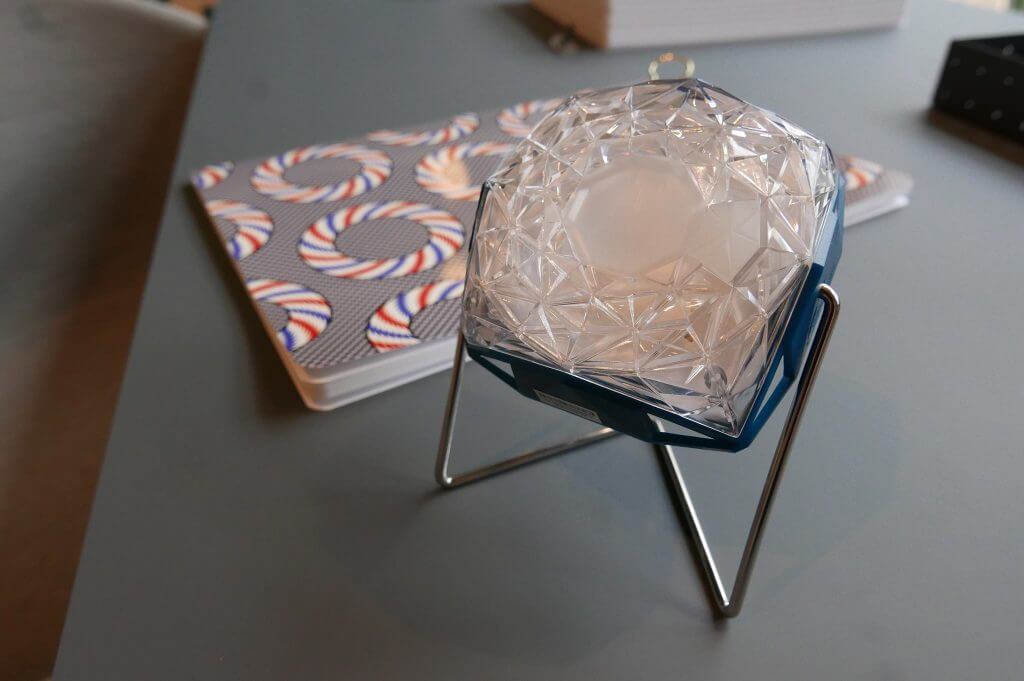Little Sun empowers thousands without access to energy—by putting the sun directly in their hands

Little Sun launched its newest model last month—Little Sun Diamond. With its striking faceted exterior and versatile design (it can be used with a stand or worn around the neck), this new offering further establishes Little Sun as a driver of awareness and discussion around energy access.
Little Sun was founded in 2012 by artist Olafur Eliasson and engineer Frederik Ottesen. 1.1 billion people worldwide live without access to the grid, and Little Sun aims to leverage the safety, affordability, and sustainability of solar to enrich these communities with light. While Little Sun is a social business and a global project, art plays an important, contextualising role in all they do.
“I see Little Sun, first and foremost, as a work of art… Art, I believe, has great potential for changing the way we discuss an issue as urgent as energy access. It makes something not only comprehensible for the mind but also physically tangible.” says Eliasson. “Through the power of creativity and the arts, Little Sun provides a way to understand abstract concepts like global energy access and what it means to have power. It creates an emotional connection, giving people a unique way to engage.”
Little Sun works with many partners around the world, from museums like the Tate Modern to distributing partners in sub-Saharan Africa. In this way, Little Sun connects distant parts of the world; people everywhere are united by a common need to transition to renewable energy. Additionally, a portion of the money from the units sold at the Tate, for example, go to subsidising the distribution of units in sub-Saharan Africa, where approximately 660 million people live without energy. Roughly 500,000 units have been distributed so far and about half to more than half have gone to sub-Saharan Africa.
The concept of the sun as a universal power source directly inspired the first model’s design; Little Sun is shaped like a sunflower and can be worn around the neck on a lanyard. This cheerful yellow lamp was also created with a serious goal in mind: To displace the dangerous and highly pollutive kerosene lamps currently being used in many parts of sub-Saharan Africa. The United Nations attributes about 4.5 million deaths per year to respiratory illnesses and accidents via any type of burning fuels for lighting and for cooking. For scale, this is essentially a population the size of Denmark’s.
“The idea was to make kids feel empowered especially, as though they could draw the sun down from the sky and hold it in their hands,” says Felix Hallwachs, Managing Director. “It’s surprisingly practical and it actually works for most scenarios: You’re washing the dishes, you’re reading a book, you’re doing your homework, etc.”
Image of Little Sun Diamond via Little Sun’s Facebook page.
Following Little Sun came Little Sun Charge, which includes a USB port and is a direct result of user feedback: People wanted a way to charge their phones. Little Sun Diamond is the third unit in the series. Closer to the size of the original model, it features a clear light in the centre, which is great for reading. On the sides, it sparkles. This iteration on the Little Sun features a more mature design as well as a removable stand. Furthermore, it’s optimised for transport and uses much less plastic than the original. All units provide roughly one meter of light in diameter and can be charged off the grid and used as a powerbank.
“We’re trying to make this mainstream because we think that’s where the climate discussion should be, and we feel like it should be lead in a positive way. If you live with a kerosene lamp, you feel very negatively about energy. If you live with Little Sun, you have the opportunity to feel very positively connected. You just put it in the centre of your room and every night you have light, and it’s safe,” says Hallwachs. “We think this is the perfect little gift of sunshine in times when we really need the climate debate to continue. We have so much polarisation in the world, so we need something positive to unite everyone.”
One of the main challenges for Little Sun is making something that’s more affordable than kerosene lighting, which costs about a euro a week to re-fuel. While the Little Sun costs a one-off price of €10, this money is not readily available for everyone. This is why Little Sun hopes to integrate mobile payments into its newer designs, so people may be able to pay for them in instalments. They also plan to create a room lighting unit, which would be a bigger lamp (around five times the size of the previous models) with a separate solar panel. Aside from launching new products, Little Sun aims to further develop the social side of the organisation.
“I want Little Sun to become a symbol for energy access and sustainability,” says Eliasson. “Together with my team, I have also just launched the Little Sun Foundation. The foundation delivers solar energy to the most vulnerable communities worldwide, especially displaced people and school children. Right now, we’re fundraising to bring lamps to Puerto Rico, as the whole island is without electricity in the wake of Hurricane Maria.”
Learn more about Little Sun here.

